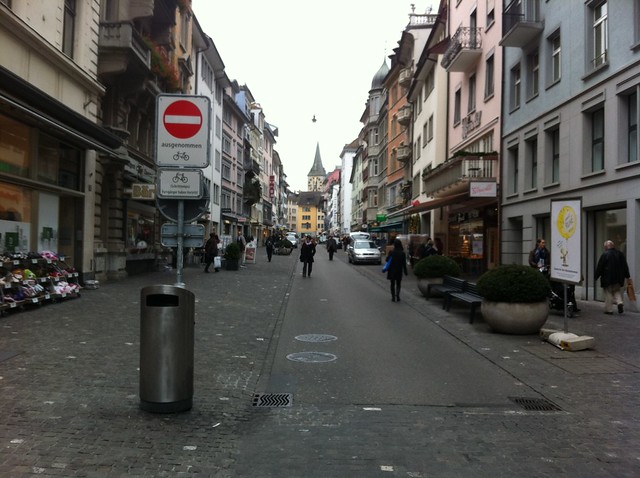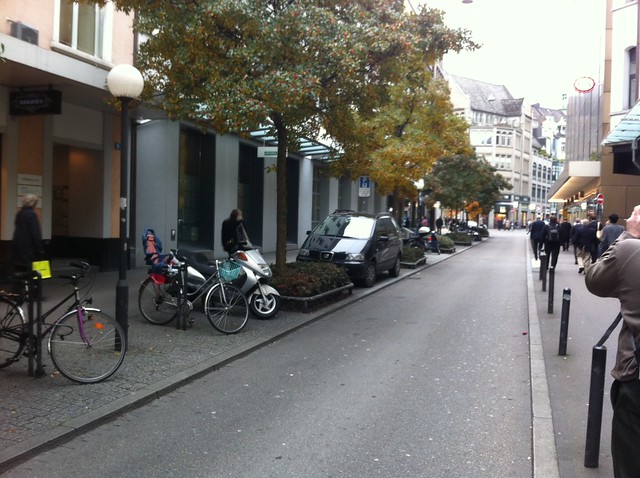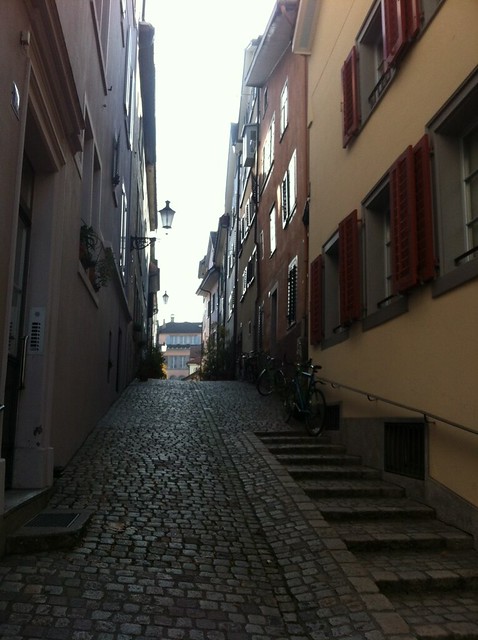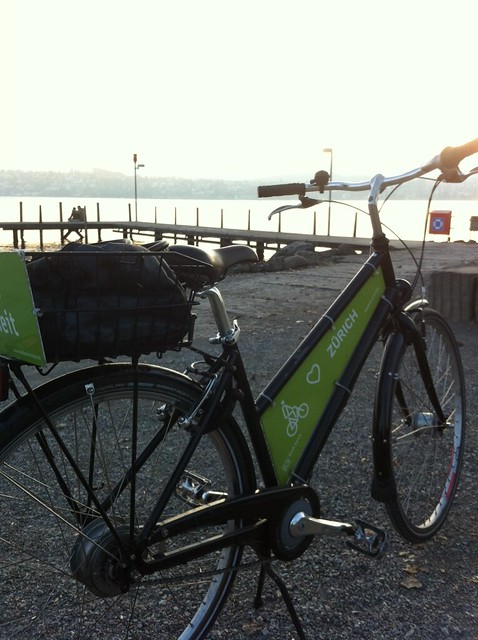
I had the incredible opportunity to go to Switzerland for a week devoted to the study of sustainable transport, thanks to an amazing program run by the Swiss Embassy in DC, ThinkSwiss. Yay for Swiss ingenuity.
My cohort of US transportation nerds included experts from academia, public sector, and industry associations from across the country. It was a pretty diverse group, an almost even split in gender, and not dominated by white, middle-aged male engineers.
The program design was very thoughtful. We met with Swiss people responsible for federal level transport policy, sustainable planning, financing, down to city-level design and implementation. We got an in-depth briefing about the timetable approach for managing rail systems. We visited the construction site of the Cross Rail project in Zurich, toured the Stadler rail car factory and Zurich airport, and even went down to the still under construction Gotthard Base Tunnel, for an up-close look at one of the greatest engineering feats in world history. Thanks to our intrepid hosts, our visits to all sites were conducted via rail and public transport.* I don’t know how they put up with us non-German-speaking yahoos (myself included) for so long on so many transit trips - I can’t say the word amazing enough.
For me, it’s hard to walk around a European city and not ooh and aah over the livable street design and the stories behind making them happen. On the other hand, more than once, more than one of my colleagues mentioned that he just didn’t “get” urban design/policy, so I wanted to dive into this a little bit.
Here’s a typical street one might encounter in Zurich. 
We walked through many streets like this, and one day was even led by Ruedi Ott, currently Director of Transport Planning in Zurich and a hero in street design and urban planning. (If you know how lovely it is to meander around Zurich these days, you have Ruedi to thank.)
This typical Zurich street is supported by multiple policies. The parking design speaks to a culture that puts bicycles and pedestrians above cars. Look at how bike parking is treated with the same level of importance as car parking. Plus, cooperation from enforcement agencies is needed to make sure cars don't overrun the sidewalk. Look at how well the trees are protected, so yes, street trees are important. Cars have to drive down this street very slowly, since people cross wherever they like - no curbs! What does this say about how this city thinks about how people must share space and how that space is connected to the health of the environment overall? 
OK, what about this image? Another typical alleyway/path in old town Zurich. Maybe it can be attributed to medieval design, but those weren’t exactly golden days. People struggled and were lucky to survive the plague. Still, the stair and ramp combo? Genius: it supports every level of physical ability, makes it easy to have a bike in spite of the hills, and kudos to modern Zurich for keeping the design. (You can see updated versions of this in mega-cities in China). As for the quality of the path materials, the cleanliness, etc, these things don’t happen on their own. They are a reflection of some form of urban design, zoning, preservation, and sanitation policies.
I bring these up because the policy-design link tends to be elusive, especially when one is so deeply focused on technology and engineering, which the transportation field tends to be. Plus it's easy to overlook small scale details when thinking about big policy. But I do believe that the way we design and therefore experience our streets and cities is an illustration of our policies and therefore priorities as a society. Don’t want to get too lecture-y, this was just one of the interesting conversations that happened a few times over the week.
* Without mentioning it to us, our hosts also chose some of the best places in Zurich for hanging out and meals. Here are a few, in case you’re in need: Reithalle is a restaurant in an old horse barn on a redeveloped military riding school on an island in the center of Zurich, worth checking out just for the history; Schipfe 16, a state-run restaurant that also acts a rehabilitation program, and it's on the waterfront on the border of Old Town; Restaurant Terroir for everything Swiss, from the tables and cutlery to the food and wine; Corazon for an extensive cocktail menu and warm, laid-back crowd; LaSalle, part of a theater, bar, restaurant, club complex in a redeveloped building that used to handle ship construction.
11.16.2011
The Legibility of Street Design
Posted by Shin-pei at 6:14 AM
Subscribe to:
Post Comments (Atom)
0 comments:
Post a Comment